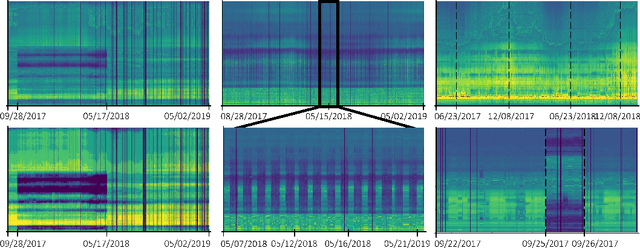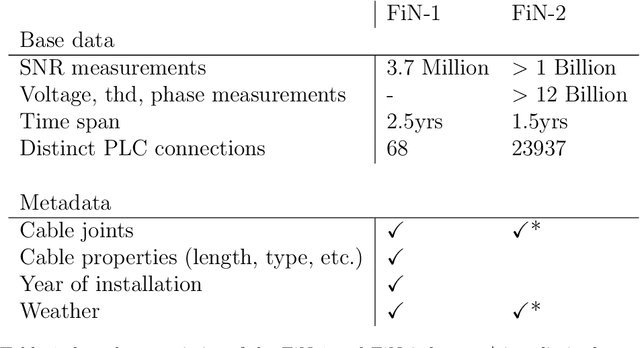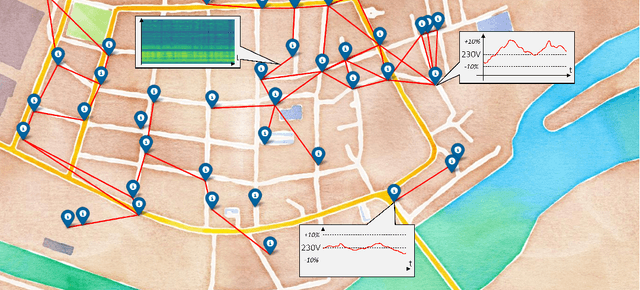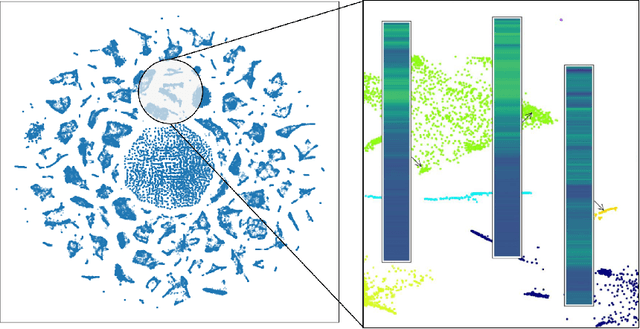Andreas Dengela
Leveraging the Potential of Novel Data in Power Line Communication of Electricity Grids
Sep 23, 2022



Abstract:Electricity grids have become an essential part of daily life, even if they are often not noticed in everyday life. We usually only become particularly aware of this dependence by the time the electricity grid is no longer available. However, significant changes, such as the transition to renewable energy (photovoltaic, wind turbines, etc.) and an increasing number of energy consumers with complex load profiles (electric vehicles, home battery systems, etc.), pose new challenges for the electricity grid. To address these challenges, we propose two first-of-its-kind datasets based on measurements in a broadband powerline communications (PLC) infrastructure. Both datasets FiN-1 and FiN-2, were collected during real practical use in a part of the German low-voltage grid that supplies around 4.4 million people and show more than 13 billion datapoints collected by more than 5100 sensors. In addition, we present different use cases in asset management, grid state visualization, forecasting, predictive maintenance, and novelty detection to highlight the benefits of these types of data. For these applications, we particularly highlight the use of novel machine learning architectures to extract rich information from real-world data that cannot be captured using traditional approaches. By publishing the first large-scale real-world dataset, we aim to shed light on the previously largely unrecognized potential of PLC data and emphasize machine-learning-based research in low-voltage distribution networks by presenting a variety of different use cases.
A Robust and Precise ConvNet for small non-coding RNA classification
Dec 23, 2019



Abstract:Functional or non-coding RNAs are attracting more attention as they are now potentially considered valuable resources in the development of new drugs intended to cure several human diseases. The identification of drugs targeting the regulatory circuits of functional RNAs depends on knowing its family, a task which is known as RNA sequence classification. State-of-the-art small noncoding RNA classification methodologies take secondary structural features as input. However, in such classification, feature extraction approaches only take global characteristics into account and completely oversight co-relative effect of local structures. Furthermore secondary structure based approaches incorporate high dimensional feature space which proves computationally expensive. This paper proposes a novel Robust and Precise ConvNet (RPC-snRC) methodology which classifies small non-coding RNAs sequences into their relevant families by utilizing the primary sequence of RNAs. RPC-snRC methodology learns hierarchical representation of features by utilizing positioning and occurrences information of nucleotides. To avoid exploding and vanishing gradient problems, we use an approach similar to DenseNet in which gradient can flow straight from subsequent layers to previous layers. In order to assess the effectiveness of deeper architectures for small non-coding RNA classification, we also adapted two ResNet architectures having different number of layers. Experimental results on a benchmark small non-coding RNA dataset show that our proposed methodology does not only outperform existing small non-coding RNA classification approaches with a significant performance margin of 10% but it also outshines adapted ResNet architectures.
 Add to Chrome
Add to Chrome Add to Firefox
Add to Firefox Add to Edge
Add to Edge